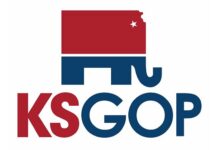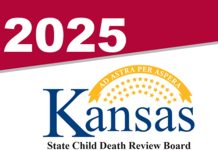State health officials estimate that the response to the measles in outbreak in Kansas will cost taxpayers at least $2.6 million.
Dereck Totten, the state’s chief medical officer, provided the estimate Tuesday when giving lawmakers a briefing on the measles outbreak in Kansas.
The state health department based its estimate on a review of the costs of measles outbreaks in the United States collected by the Centers for Disease Control and Prevention from 2001 to 2018.
The review estimated the median cost per measles case at $32,805 and the median cost per contact at $223.
Based on that information, the state health department estimated the cost of measles in Kansas from Jan. 1, 2025, to June 16, 2025, at a total of about $2.6 million based on 80 confirmed measles cases.
The agency said it’s in the early stages of an economic impact analysis that will more accurately assess the costs associated from the state’s measles outbreak response.
Democratic state Sen. Pat Pettey of Kansas City tried to drill down further and identify where the costs are occurring – such as lost work time – but Totten didn’t have those details available.
Republican state Rep. Will Carpenter of El Dorado questioned the costs, saying he thought they seemed excessive.
“That just seems pretty high,” he said.
Totten said he was surprised at the national estimates too, saying the data came from a study of 11 outbreaks over 17 years.
He stressed that the $2.6 million was only an estimate, pointing out that each case is different with a variety of contributing factors.
As of Tuesday, there were 88 reported measles cases in Kansas in 11 counties concentrated in southwest Kansas. Most involved children.
Thirty-five of those cases, or about 40%, were school-age children from 5 to 17. Another 36 cases were under the age of 4.
Twenty-nine were reported in Gray County where the kindergarten immunization rate for required vaccinations was 61% in 2023-24, according to state health data.
Another 20 were reported in Haskell County where the kindergarten immunization rate for required vaccinations was 56% in 2023-24.
Nine more were reported in Stevens County where the kindergarten immunization rate for required vaccinations was 73%.
And in Pawnee County, where the kindergarten immunization rate for required vaccinations was 93%, there were seven other cases reported.
The measles numbers are provisional and subject to change after a more detailed review.
Pettey voiced concern about immunization rates statewide, which she said was underscored by the increase in measles cases.
“We’re seeing that our immunization rate is not improving, it’s going down and this measles outbreak is just an example of that,” Pettey said.
“I know in some of our communities in Kansas sadly our immunization rate is really at dangerous levels when it comes to the safety of children and families,” she said.
“I think we need to be look at everything we can do to assist with that education piece.”
Republican state Rep. Ron Bryce of Coffeyville asked Totten whether the spike in measles cases could be attributed to immigrants living in the country illegally.
“Honestly, that’s difficult to answer because there are so many unknowns with information,” Totten said.
“What I would tell you is historically when an individual travels outside of the United States, we do recommend immunizations at earlier ages because of the increased rates of measles at those types of locations,” he said.
“But that is still a question that CDC is looking at in addition to the genetics and how the transmission is taking place with this current outbreak.”















